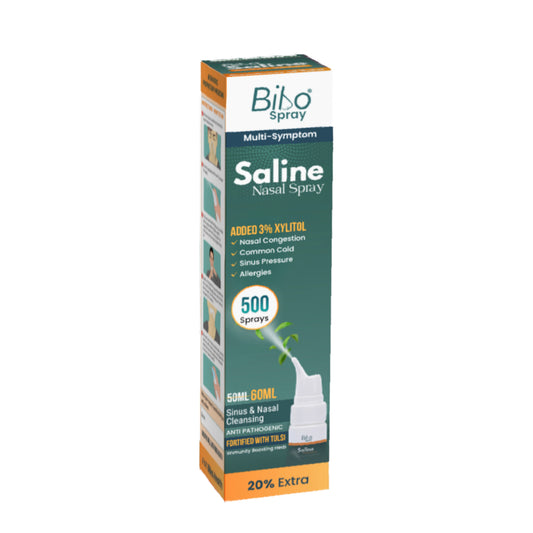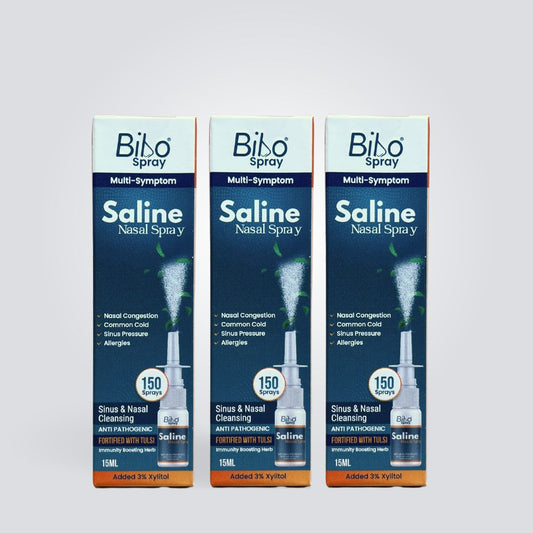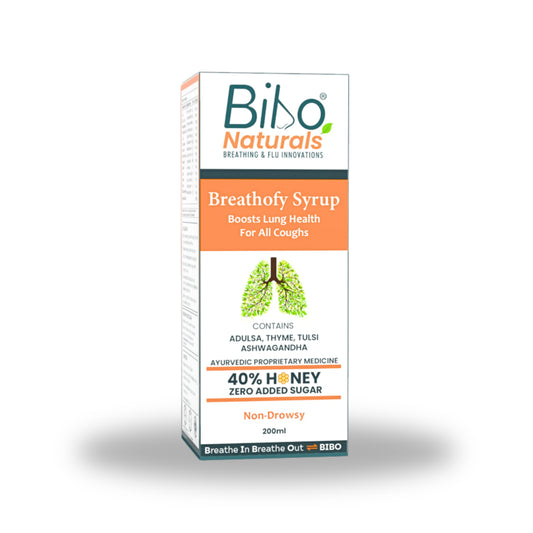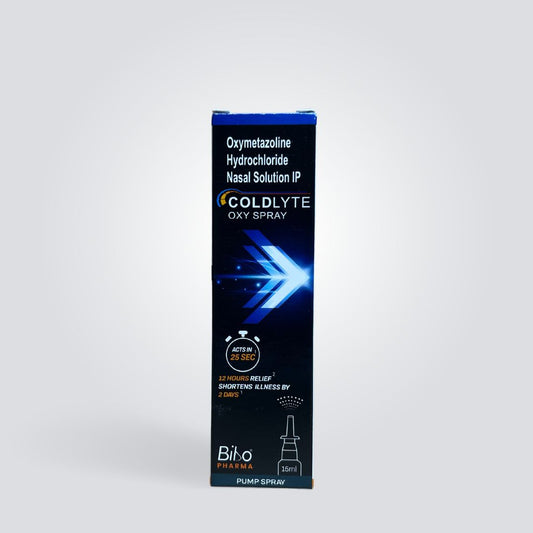Oxymetazoline is a nasal decongestant. It opens the blocked nose and reduces nasal and sinus congestion caused due to allergies, common cold, sinusitis, and allergic rhinitis.
Nasal decongestants like oxymetazoline reduce nasal and sinus congestion by shrinking the blood vessels lining the nose and sinuses. When these blood vessels shrink, there is enough space in the nasal and sinus passages for easy breathing.
But using decongestants more than 2 times in a day or for a few days consequently (more than 10 days) may harm the blood vessels by causing excessive shrinking. Using it only for a few days in a row can make you dependent on it. Hence, you might need a larger dose than the previous one to shrink the blood vessels and reduce congestion. After discontinuing the drug, the blood vessels swell again, producing more congestion which contributes to worsening one's condition (congestion). This is known as rebound congestion or Rhinitis Medicamentosa.
Rebound congestion typically refers to bouncing back of congestion with a greater effect. Hence, it is advisable to read the product label before using it.
Advantages of oxymetazoline nasal spray
Oxymetazoline nasal spray has several advantages, such as-
- It provides quick relief from a blocked nose. It starts to unblock the nose in 25 seconds.[1] Hence, it can be used to provide instant relief to people with a blocked nose or nasal and sinus congestion.
- It shows a longer duration of action (for up to 12 hours). [2] This reduces the repeated use of the nasal spray. It also improves compliance with the medicine.
- It reduces the symptoms of acute rhinitis by 2 days. [1]
- Unlike some nasal sprays, which take a few days to show complete benefits, oxymetazoline starts to show benefits within seconds.
Disadvantages of oxymetazoline nasal spray
- Prolonged use of oxymetazoline nasal spray may cause rebound nasal congestion.
- Oxymetazoline may cause side effects such as burning sensation in the nose and throat, increased nasal discharge, nasal dryness, sneezing, nervousness, dizziness, headache, difficulty sleeping, increased heart rate and blood pressure, blurred vision, swelling of the face, lips, tongue or throat, etc.
- Oxymetazoline nasal spray should be used carefully in people with high blood pressure, high sugar levels (diabetes), heart problems and women who are pregnant and breastfeeding.
- Studies have shown that oxymetazoline nasal spray may cause cardiovascular (heart and blood vessels) and central nervous system (brain and spinal cord) side effects such as agitation, anxiety, insomnia, convulsions, increased heart rate and vasoconstriction (narrowing or shrinking of the blood vessels), and increased blood pressure.
- Oxymetazoline nasal spray cannot be used in children below 12 years.
- Oxymetazoline may cause dizziness and drowsiness. Hence, it should not be taken by people who need complete concentration, especially when driving or operating heavy machinery, etc.
Delivery methods for oxymetazoline nasal spray
- Squeeze bottle:
Oxymetazoline is generally available in squeeze bottles. Using the squeeze bottles of oxymetazoline may result in non-uniform dosing of the medicine. This may result in administering either less or an extra dose of oxymetazoline which may cause harmful effects.
Studies have shown that the amount of oxymetazoline delivered to the nasal area may greatly depend on the amount of drug (medicine) present in the bottle and the position of holding the bottle (i.e. either upright or inverted). It also shows that administering oxymetazoline in an inverted position with the bottle full or half-filled will increase the amount of drug (medicine) by 10 times. This increase in dose may cause harmful effects to the body and not just the nasal and sinus passages. [3]
- Pump spray:
Unlike squeeze bottles, a pump spray delivers a uniform dose of medicine every time you use it. A pump spray containing oxymetazoline may help to deliver a uniform dose of oxymetazoline, which may reduce the chances of improper dosing. This is a novel innovation to reduce the harmful effects of excess dosing of oxymetazoline.
|
CHARACTERISTICS |
SQUEEZE BOTTLE |
PUMP SPRAY |
|
Volume of drug delivered |
Varies |
Uniform |
|
Side effects due to overdose (because of non-uniform dosing) |
High chances |
No chances of overdose due to the uniform dosing |
|
Effects of posture on quantity of drug delivered |
Highly dependent |
Independent |
Important instructions to follow while administering a nasal spray
- For pump spray: if you are using the spray for the first time or after some days, it is better to initially prime the spray.
- Clean the tip (in pump spray) or nozzle (in squeeze bottles) of the spray after each use.
- Do not share your nasal spray with others, as it may increase the chance of infection.
How BIBO helps!
To overcome the problems associated with the squeeze bottles of oxymetazoline nasal spray, BIBO has launched India's first oxymetazoline-containing pump spray. It may help to deliver a uniform dose of oxymetazoline. With a uniform dose, the chances of overdose-related side effects can be minimized or avoided.
References:
- Reinecke S, Tschaikin M. Untersuchung der Wirksamkeit von Oxymetazolin auf die Rhinitisdauer. Ergebnisse einer plazebokontrollierten Doppelblindstudie bei akuter Rhinitis [Investigation of the effect of oxymetazoline on the duration of rhinitis. results of a placebo-controlled double-blind study in patients with acute rhinitis]. MMW Fortschr Med. 2005 Oct 6;147 Suppl 3:113-8. German. PMID: 16261947.
- Pritchard S, Glover M, Guthrie G, Brum J, Ramsey D, Kappler G, Thomas P, Stuart S, Hull D, Gowland P. Effectiveness of 0.05% oxymetazoline (Vicks Sinex Micromist®) nasal spray in the treatment of objective nasal congestion demonstrated to 12 h post-administration by magnetic resonance imaging. Pulm Pharmacol Ther. 2014 Feb;27(1):121-6. doi: 10.1016/j.pupt.2013.08.002. Epub 2013 Aug 27. PMID: 23988443.
- Hakim M, Walia H, Rafiq M, Grannell T, Cartabuke RS, Tobias JD. Oxymetazoline Metered Dose Spray: Factors Affecting Delivery Volume. J Pediatr Pharmacol Ther. 2016 May-Jun;21(3):247-51. doi: 10.5863/1551-6776-21.3.247. PMID: 27453703; PMCID: PMC4956333.




